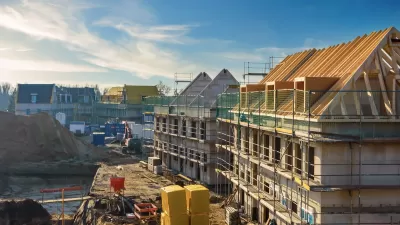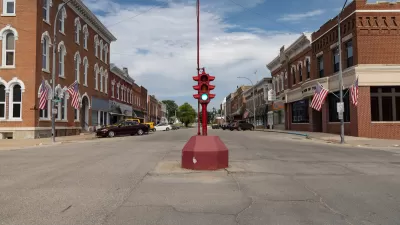Justin B. Hollander at Tufts University looks at the increasing shrinkage of cities like Flint, Michigan and Youngstown, Ohio and the myriad strategies these cities are taking to shrink effectively.
Hollander writes, "Cities around the globe have experienced depopulation or population shrinkage at an acute level in the last half century. Conventional community development and planning responses have looked to reverse the process of depopulation almost universally, with little attention paid to how neighborhoods physically change when they lose population.
This article presents an approach to study the physical changes of depopulating neighborhoods in a novel way. The approach considers how population decline creates different physical impacts (more or less housing abandonment, for example) across different neighborhoods. Data presented from a detailed case study of Flint, Michigan, illustrate that population decline can be more painful in some neighborhoods than in others, suggesting that this article's proposed approach may be useful in implementing smart decline."
Link is to a downloadable PDF of the full article.

Planetizen Federal Action Tracker
A weekly monitor of how Trump’s orders and actions are impacting planners and planning in America.

Chicago’s Ghost Rails
Just beneath the surface of the modern city lie the remnants of its expansive early 20th-century streetcar system.

San Antonio and Austin are Fusing Into one Massive Megaregion
The region spanning the two central Texas cities is growing fast, posing challenges for local infrastructure and water supplies.

Since Zion's Shuttles Went Electric “The Smog is Gone”
Visitors to Zion National Park can enjoy the canyon via the nation’s first fully electric park shuttle system.

Trump Distributing DOT Safety Funds at 1/10 Rate of Biden
Funds for Safe Streets and other transportation safety and equity programs are being held up by administrative reviews and conflicts with the Trump administration’s priorities.

German Cities Subsidize Taxis for Women Amid Wave of Violence
Free or low-cost taxi rides can help women navigate cities more safely, but critics say the programs don't address the root causes of violence against women.
Urban Design for Planners 1: Software Tools
This six-course series explores essential urban design concepts using open source software and equips planners with the tools they need to participate fully in the urban design process.
Planning for Universal Design
Learn the tools for implementing Universal Design in planning regulations.
planning NEXT
Appalachian Highlands Housing Partners
Mpact (founded as Rail~Volution)
City of Camden Redevelopment Agency
City of Astoria
City of Portland
City of Laramie





























